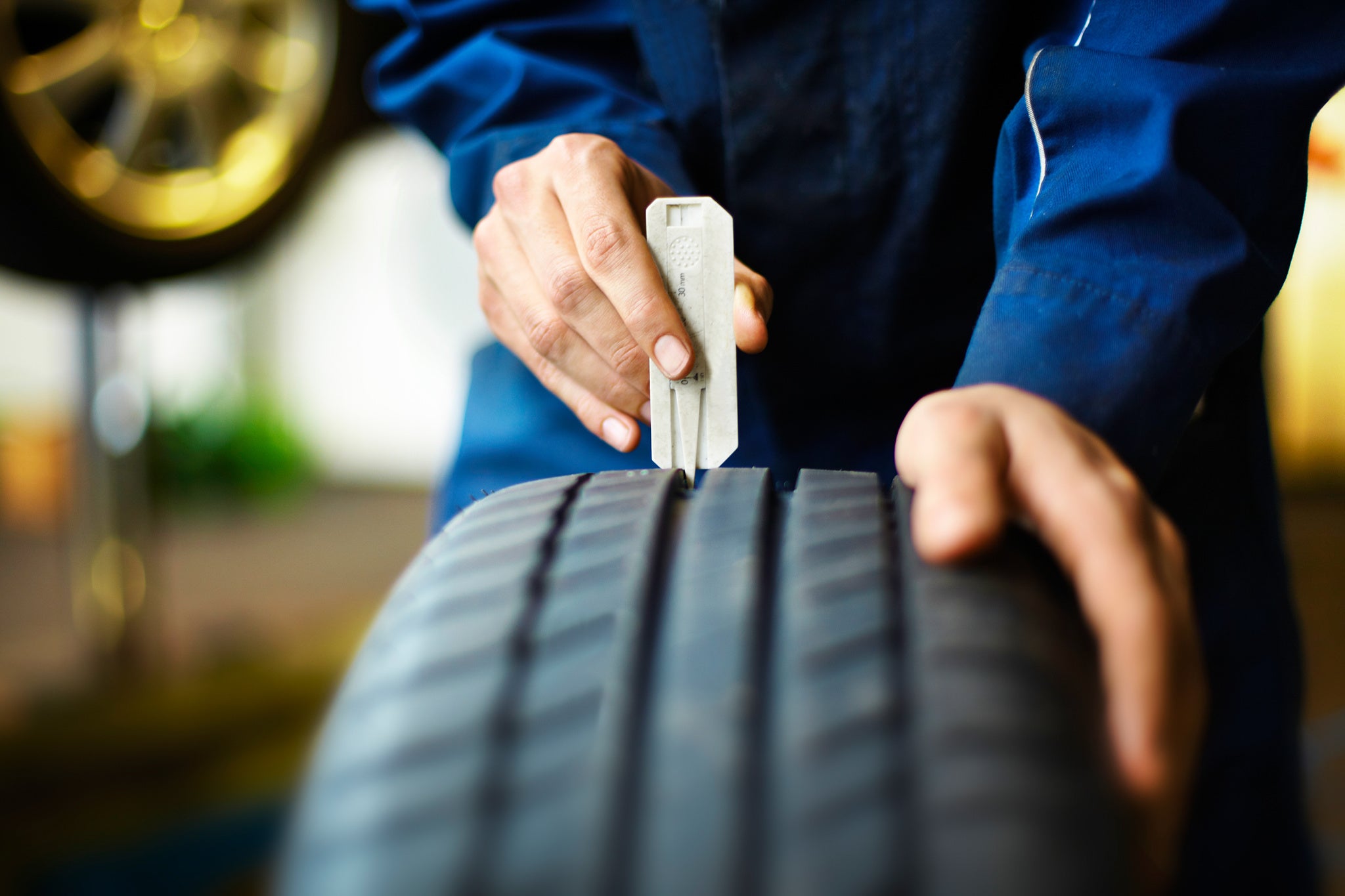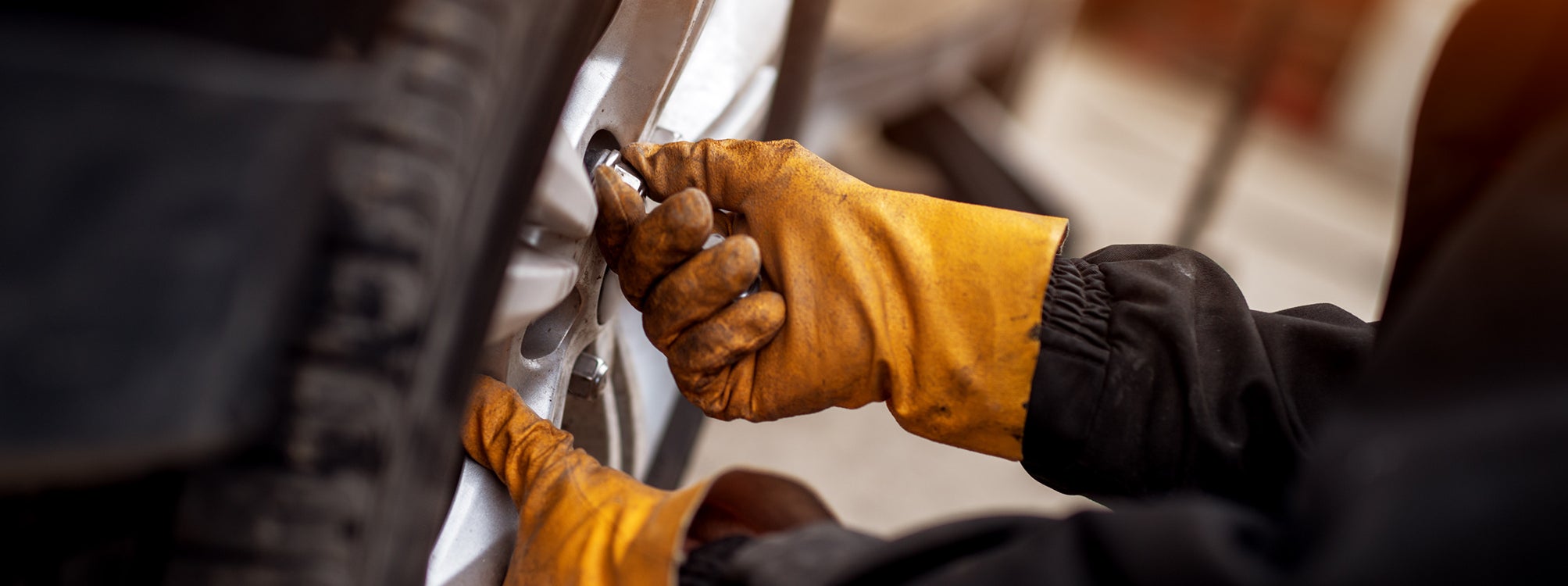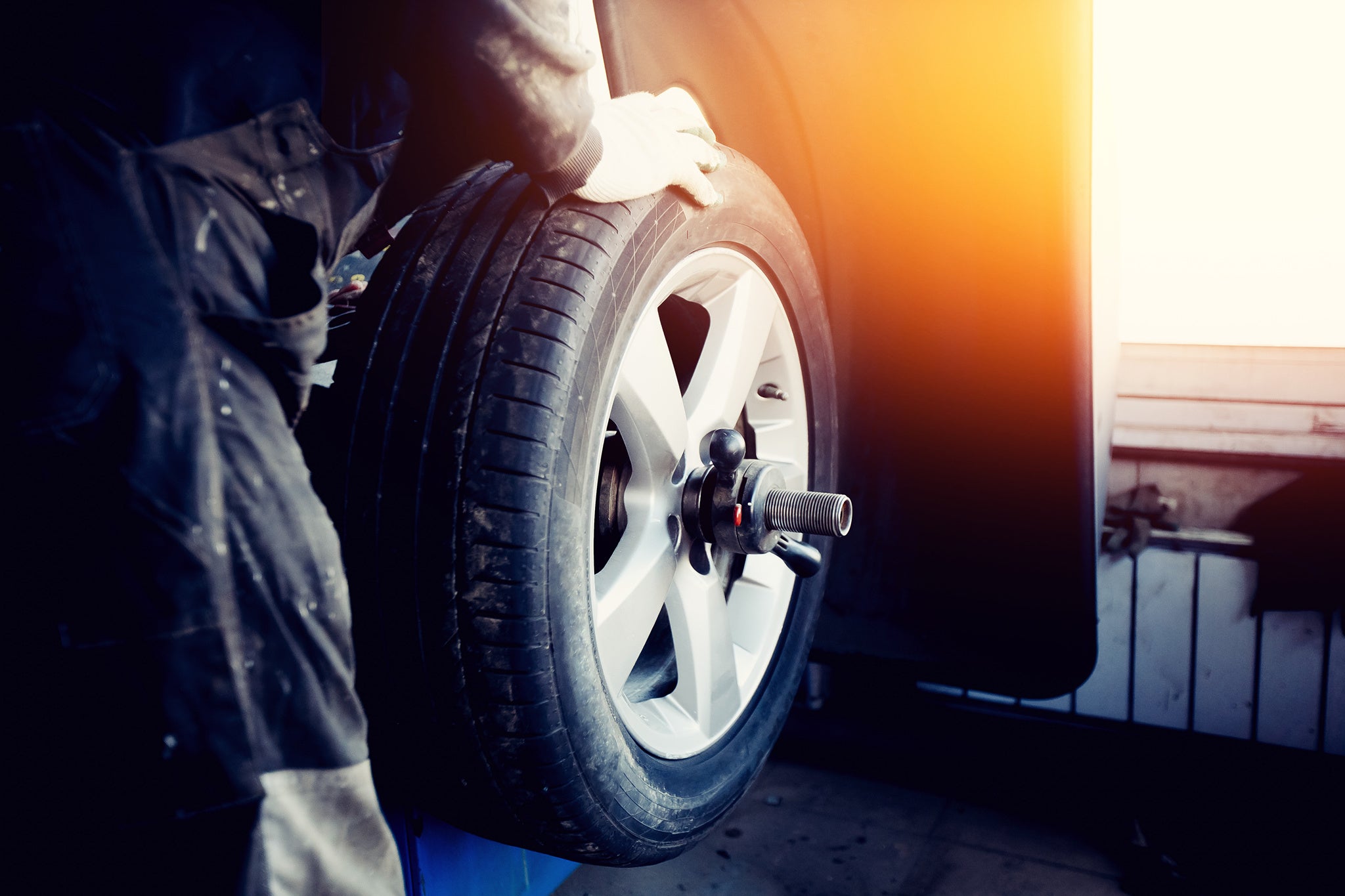
# Tyre Care and Maintenance
Tread depth
The importance of tread depth
Hardly anything must be as resistant as car tyres
Your tyres form the essential bond between your vehicle and the ground. The tread grips the road as you drive. But if it's not deep enough, your car loses traction and suffers extended braking times. Shallow tread grooves make it harder to control the vehicle in wet weather and the chance of aquaplaning increases. To ensure your safety, measure the tread depth as part of your regular vehicle maintenance.
Tread is the rubber on the tyre that touches the road. As you drive, the tread will wear down. A tyre with a tread depth below 1.6 millimeters (2/32 inches) lacks grip. Braking distance and vehicle control are impaired. These tyres are not safe for driving and must be replaced.
Please consider that safe driving in wet and snowy weather conditions is affected by the tread depth, the pattern design and the rubber compound of the tread of your tyres. On wet or snow-covered roads braking performance will progressively decline with lower tread depths. On wet roads there is an additional increased risk of aquaplaning with fading tread depths. New tyres have far fewer problems with aquaplaning and provide better grip at higher speed.
Therefore, check your tyres regularly, reduce your speed on wet and snowy roads and consider replacing your tyres in good time.
Ensure your vehicle is equipped with the correct winter, summer, or all-season tyres. All season tyres are specially adapted to the corresponding weather and road conditions of the season. A minimum of 1.6 millimetres is also required for the tread depth of winter and summer tyres. However, there is no legal requirement in the UK to change tyres during winter whereas in Germany, the law requires a situational obligation to equip the car with winter tyres when conditions are icy. As a rule of thumb, winter tyres are applied between October and Easter.
Please consider that safe driving in wet and snowy weather conditions is affected by the tread depth, the pattern design and the rubber compound of the tread of your tyres. On wet or snow-covered roads braking performance will progressively decline with lower tread depths. On wet roads there is an additional increased risk of aquaplaning with reduced tread depths. New tyres have far fewer problems with aquaplaning and provide better grip at higher speed.
Therefore, check your tyres regularly, reduce your speed on wet and snowy roads and consider replacing your tyres in good time.
Inform yourself before travelling abroad by car about the varying regional legal requirements of tread depth to avoid fines.
Are my tyres worn-out? Check the tread with tread wear indicators
Tread wear indicators, or wear bars, are spaced evenly through the main grooves in the tyre tread. They indicate how much of the tyre has already rubbed off and if the tyre is worn out. The tread wear indicator is as well displayed with a small arrow on the sidewall of the tyre and the letters "TWI". If they are flush with the level of the tread, then the tyre should be replaced.
Several winter tyre models are equipped with winter tyre wear indicators. The winter TWI are marked with a snowflake on the sidewall of the tyre. On some summer tyres, additional ridges are marked with a drop of water to check the level of tread wear. Rule of thumb: If the tyre wear indicators are flush with the level of the tread, the tyre is no longer suitable for winter driving conditions. In some locations, they may also no longer legally qualify as winter tyres.
Find out more about the factors impacting tyre tread wear and mileage and how you can prolong the life of your tyres.

Using a tyre tread depth gauge
If you have a tyre tread depth gauge, use it to measure the tread depth. Insert the probe bar into the groove and push the shoulders flush with the tread. Check the top of the gauge to see the measurement. Alternately, a small ruler can be used.
Be sure to check in various locations. A misaligned wheel may result in uneven treadwear. Keep an eye open for any areas that look more worn than the surrounding surface. The tyre's tread should be judged by the lowest depth you measured.
If you are uncertain of the measurements, take your vehicle to a service center.

Is the tyre damaged?
While measuring the tread, look for cupping, or scalloping. These are small scoops, or divots, carved from the tread. They can indicate misalignment or other problems with your vehicle. In the event of a tyre damage, always take your car to a service centre.
Also, watch out for bulges in the tyre tread or sidewall. They are not safe. You need to get a new tyre.
Related content
-
 2022/09/07Tyre pressureCar safety is significantly upgraded with an integrated TPMS. Learn all about integrated tyre-pressure monitoring systems and how they work.Read more
2022/09/07Tyre pressureCar safety is significantly upgraded with an integrated TPMS. Learn all about integrated tyre-pressure monitoring systems and how they work.Read more -
 2022/09/07Retorquing wheelsWhenever you have new wheels and tyres fitted to your car, it’s essential for road safety to have the lug nuts retorqued after the first 30 milesRead more
2022/09/07Retorquing wheelsWhenever you have new wheels and tyres fitted to your car, it’s essential for road safety to have the lug nuts retorqued after the first 30 milesRead more -
 2022/09/07Balancing tyresProper tyre balance will distribute weight equally around the entyre circumference of the tyre. Unbalanced wheels cause vibrations and premature wear.Read more
2022/09/07Balancing tyresProper tyre balance will distribute weight equally around the entyre circumference of the tyre. Unbalanced wheels cause vibrations and premature wear.Read more